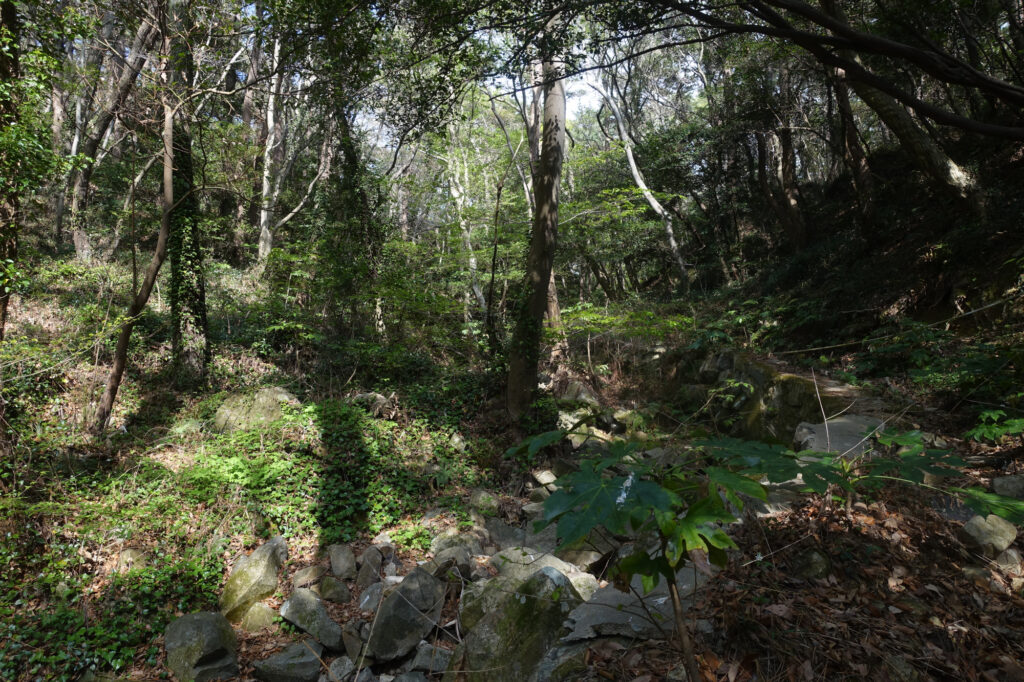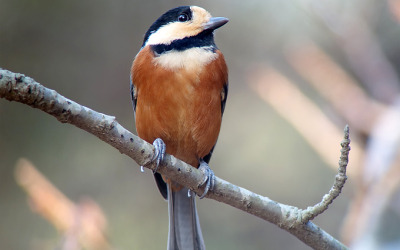Bird News from Nial Moores
Rain and strong southerlies are the ideal conditions for falls of Japanese-bound migrants in Busan. This spring has remained stubbornly dry locally, however, with abundant sunshine and winds often tending to the east.
My personal first Pacific Swift of the year was on March 21st; and a survey of visible migration with Mr Won Jongtae on March 25th at Gadeok Island (proposed site for a new international airport – requiring a huge reclamation project and the removal of a village and at least one mountain) had more of a late winter than spring feel, with almost 800 Rook and 80 Eurasian Sparrowhawk counted passing north, with additional highlights provided by a small flock of Japanese Waxwing, one or two personata Black-faced Bunting (soon to be split as Masked Bunting Emberiza personata) and also my first Barn Swallows this year (Full eBird Checklist here).
On March 27th, highlight of the spring so far was found in steep hill woodland only 200 m from the Birds office: an exceptionally early Japanese Night Heron. The bird was found following the passage of a low pressure system which also dropped record-breaking numbers of Oriental Plover on Jeju and up along the west coast.(Full eBird checklist here).
In the following week, spring chorus included the first local White’s and Grey-backed Thrushes and on April 7th, following some southerlies, heavy overcast and a two-minute rain shower, a few hours in Igidae also produced my first of the year Eastern Crowned Warblers (remarkably scarce so far this spring), Korean Bush Warbler, Asian Stubtails, Grey and Brown-headed Thrushes (with several thrushes heard dropping in from on high), and Stejneger’s Stonechat – until a decade ago quite regular in spring locally (Full eBird Checklist here).


The next visit to Igidae – on April 11th – was even more productive, with more thrushes heard dropping in from on-high, and a conservative count of 30 Grey Thrush. Additional expected migrants included a presumed Narcissus Flycatcher, a few Ashy Minivets and at least 50 Barn and two Red-rumped Swallows. (Full eBird checklist here).

On April 12th, a few hours in Taejongdae – usually the easiest site locally for Japanese Robin – produced very few birds indeed, with the very modest highlight a lone Blue-and-white Flycatcher (Full eBird Checklist here).


After a few days of moderate to strong easterlies, winds eventually fell much lighter and swung back to the west late on 16th/ early on 17th. My last visit for a while to Igidae on April 17th produced highlights of single Sakhalin Leaf Warbler and Oriental Scops Owl, four Narcissus Flycatcher, a singing Siberian Blue Robin and a very brief view of a Siberian Rubythroat, rather scarce locally (Full eBird Checklist here).








